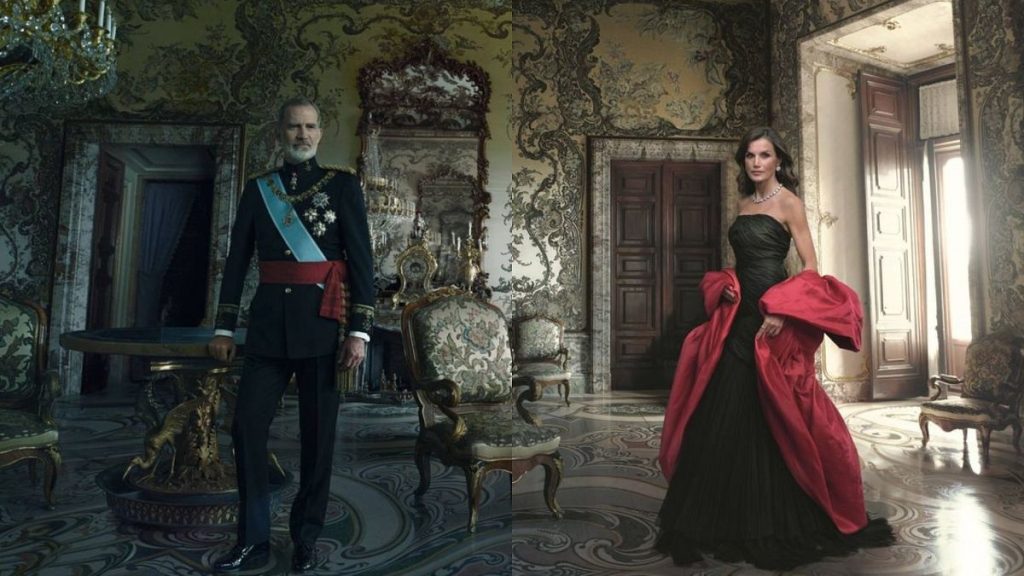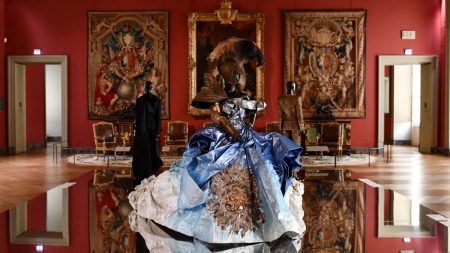Two new portraits of the King and Queen of Spain have been unveiled at the Banco de España as part of an innovative exhibition entitled ‘The Tyranny of Chronos.’ Renowned American photographer Annie Leibovitz created these portraits, marking a significant addition to both the bank’s collection and contemporary royal representation. Leibovitz, celebrated for her iconic images of cultural figures and celebrities, has captured the essence of current Spanish royalty through her lens, becoming the first to officially photograph King Felipe VI and Queen Letizia. This exhibition not only showcases these royal portraits but also includes a range of clocks and watches, aiming to provoke critical thought about the conventional perceptions of time throughout Western history.
The exhibition ‘The Tyranny of Chronos’ transcends a mere display of timekeeping devices by presenting pieces crafted by artists from various backgrounds and eras. Each item in the collection challenges established norms concerning time’s significance and representation in society. The intricate juxtaposition of timepieces alongside the contemporary royal portraits by Leibovitz serves to deepen the dialogue about how time is perceived and the role of monarchy within that context. The bank’s initiative to merge art, history, and royal imagery illustrates a deliberate effort to engage the public in reflecting upon Spain’s cultural narratives, both traditional and modern.
Annie Leibovitz’s style, characterized by its captivating depth and distinctive compositional techniques, aligns harmoniously with the historical significance of the royal subjects. The portraits not only highlight King Felipe and Queen Letizia’s roles within Spain’s monarchy but also explore their identities as modern figures in an evolving societal landscape. By utilizing her celebrated methodology, Leibovitz crafts images that transcend typical royal portraiture; they encapsulate the subjects’ personalities and the contemporary relevance of their reign. This artistic approach adds a layer of richness to the exhibition and encourages viewers to connect with the monarchy on a more personal level.
Former governor of the Banco de España, Pablo Hernández de Cos, will formally present the two portraits, acknowledging their significance in relation to the institution’s legacy. The bank underscores that Leibovitz’s work represents a pivotal evolution in the approach to royal portraiture, resonating with historical figures like Francisco Goya, whose works are also featured in the exhibition. Leibovitz’s commission reflects a contemporary awareness of artistic intent, merging tradition with modern creativity. The notable comparison to Goya indicates a conscious effort to foster historical continuity while simultaneously embracing artistic innovation.
The display at the Banco de España serves multiple purposes: it offers a platform for contemporary art, prompts discourse about the representation of time, and reinvigorates royal iconography for a new generation. As the public interacts with Leibovitz’s portraits and the accompanying timepieces, they are invited to consider the broader implications of monarchy and time’s influence on societal structures. The exhibition ultimately fosters a dialogue that bridges artistic expression and historical narrative, demonstrating art’s power to provoke thought and catalyze conversation in the cultural realm.
In summary, the presentation of Annie Leibovitz’s portraits of King Felipe and Queen Letizia is not merely an addition to Spain’s artistic heritage; it symbolizes a transformative shift in royal portraiture. Set against the backdrop of ‘The Tyranny of Chronos,’ the exhibition aligns historical critique with contemporary artistry. As visitors navigate through the collection of clocks and watches alongside the royal images, they engage in a multifaceted exploration of time, identity, and legacy. This initiative embodies the Banco de España’s commitment to fostering cultural discourse, promoting artistic awareness, and celebrating both historical and contemporary narratives within Spanish society.














